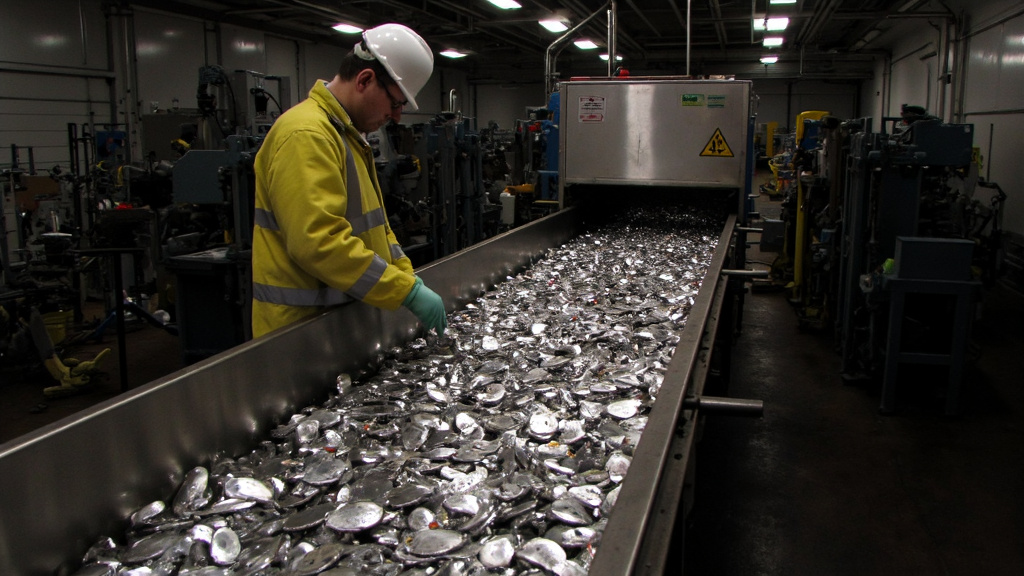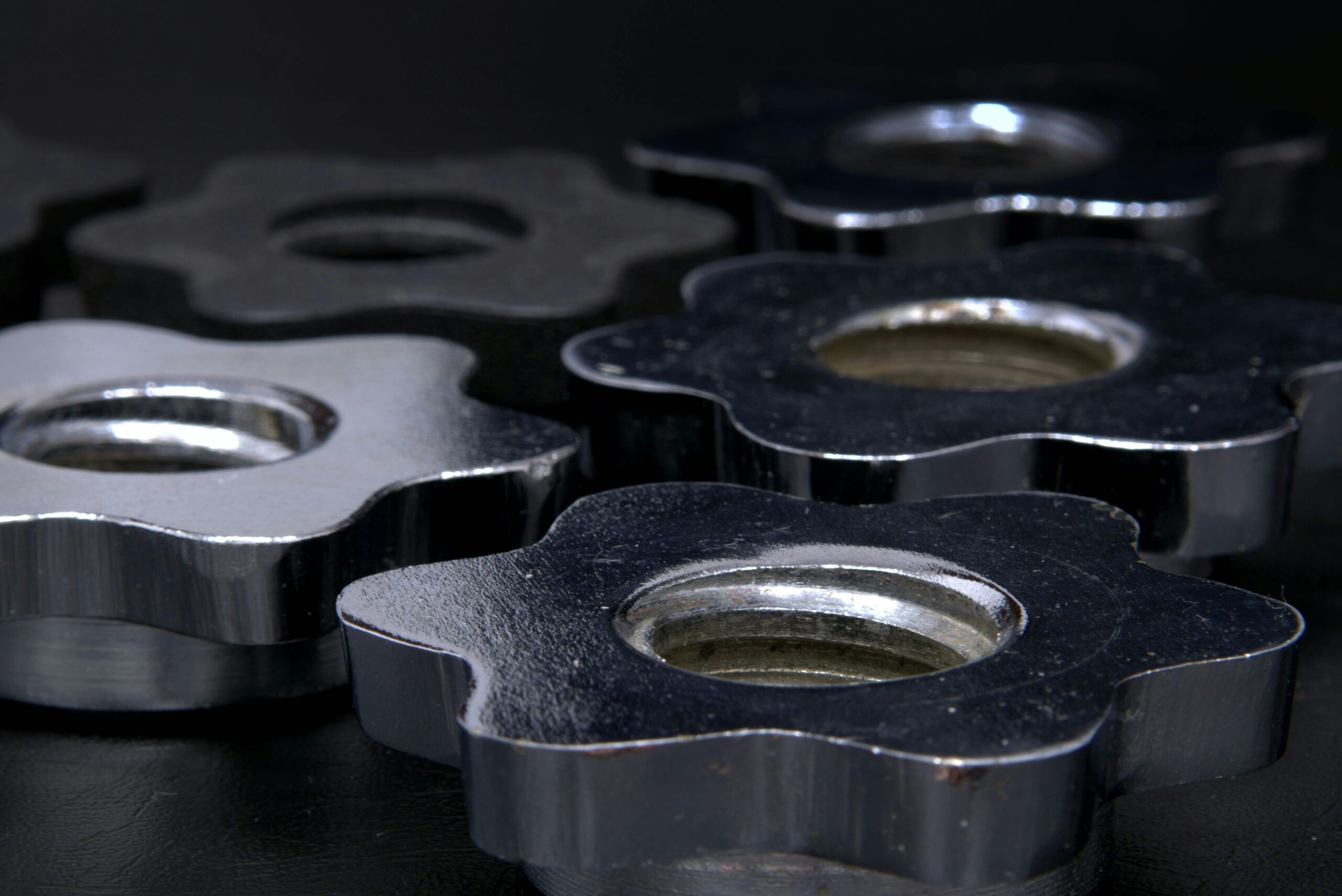5901 Botham Jean Blvd, Dallas, TX 75215
Can You Recycle Stainless Steel? – Sustainable Practices
May 7, 2025Yes, stainless steel is 100% recyclable. It is one of the most widely recycled materials globally, holding a special place in the recycling world due to its remarkable durability and reusability.
What distinguishes stainless steel from most recyclable materials is its infinite recyclability. While paper fibers break down and plastics degrade with each processing cycle, stainless steel can be recycled repeatedly without any loss of quality or structural integrity. Its molecular properties remain unchanged no matter how many times it undergoes recycling.
This perpetual recyclability makes stainless steel a cornerstone of sustainable manufacturing and responsible resource management. As conserving raw materials becomes increasingly urgent, stainless steel represents an ideal circular economy material that need never end up in landfills.
What Makes Stainless Steel Recyclable?
The exceptional recyclability of stainless steel arises from its unique composition. At its core, it contains at least 10.5% chromium. This critical threshold gives the material its signature corrosion resistance and makes it truly ‘stainless.’
The value of stainless steel in recycling stems from its alloy elements. Chromium forms a self-healing protective layer that persists through multiple recycling cycles. Nickel enhances this corrosion resistance while improving formability. Molybdenum adds strength and further resistance to pitting and corrosion.
What sets stainless steel apart from many materials is how these elements remain stable during recycling. When melted down, the chromium, nickel, and other alloying components stay intact, allowing recyclers to fully recover these valuable metals.
Molecular Structure Advantage
The molecular structure of stainless steel plays a crucial role in its recyclability. The arrangement of atoms creates a stable material that can withstand the high temperatures of the recycling process. This stability preserves the essential characteristics that make stainless steel valuable.
During recycling, stainless steel can be melted and reformed without losing quality. Unlike many materials that degrade with each recycling cycle, stainless steel maintains its properties indefinitely, making it an ideal material for a circular economy approach.
The composition can be precisely adjusted during recycling by adding specific elements as needed to achieve the desired grade of stainless steel. This ability to fine-tune the material ensures recycled stainless steel maintains the same high quality as newly manufactured steel.
Durability Factors
The remarkable durability of stainless steel contributes significantly to its recyclability. Its resistance to corrosion means products last longer before needing replacement. Kitchen appliances, industrial equipment, and architectural elements made from stainless steel often remain in service for decades.
This longevity creates a steady, predictable stream of material for recycling. When stainless steel products finally reach end-of-life, they retain their value. The metal hasn’t degraded, making it perfect for recovery and reprocessing.
Stainless steel’s heat resistance also aids in the recycling process, as it can withstand the high temperatures needed to melt and reform the metal. This thermal stability ensures efficient processing with minimal material loss.
Energy and Resource Benefits
Recycling stainless steel delivers substantial energy savings. According to industry experts, producing stainless steel from recycled materials requires about 33% less energy than manufacturing it from raw materials.
The carbon footprint shows similar improvements. Using recycled content can reduce CO2 emissions by approximately 50%. Producing one ton of stainless steel with 85% recycled content generates only 1.45 tonnes of CO2, compared to 2.90 tonnes from virgin materials.
Resource conservation represents another major benefit. Recycling reduces the need for mining operations for chromium, nickel, and other alloying elements, helping prevent habitat destruction, water pollution, and soil degradation associated with raw material extraction.
| Property | Virgin Material | After 10 Recycling Cycles | Variation |
|---|---|---|---|
| Tensile Strength (MPa) | 515 | 508 | -1.4% |
| Hardness (HRC) | 88 | 86 | -2.3% |
| Corrosion Resistance | Excellent | Excellent | No change |
The circular economy potential of stainless steel is remarkable. Its ability to be recycled indefinitely without quality loss embodies circular economy principles perfectly. This sustainable cycle of production, use, and recovery preserves resources for future generations while reducing environmental impact.
How is Stainless Steel Recycled?

Stainless steel recycling begins with collection from two key sources: reclaimed scrap from end-of-life products and industrial scrap from manufacturing processes as excess or waste material.
The recycling process starts with thorough sorting. Materials must be separated by grade and composition to ensure quality in the final product. Modern recycling facilities use advanced technologies like X-ray fluorescence analyzers that instantly identify the exact composition of each piece.
Once sorted, the material moves to shredding stations. Large pieces of stainless steel are broken down into smaller, more manageable fragments. This increases surface area and improves efficiency in subsequent processing steps.
The shredded material then undergoes cleaning to remove contaminants like oil, paint, and other non-metallic substances to maintain the integrity of the recycled steel.
Melting and Refining Process
The clean scrap enters furnaces where temperatures exceed 2,500 degrees Fahrenheit, transforming the solid scrap into molten metal. This phase allows for thorough mixing.
The refining stage involves precise adjustment of the molten metal’s composition. Metallurgists add specific amounts of alloying elements to achieve the desired properties, continuously testing samples to ensure the material meets industry specifications.
After refining, the molten stainless steel is cast into various forms, such as slabs, billets, or ingots, depending on the intended application. These forms become the raw material for manufacturing new stainless steel products.
This process creates a closed-loop system where stainless steel can be recycled repeatedly without quality degradation, significantly reducing the need for virgin material extraction and minimizing environmental impact.
| Step | Description | Technologies Used |
| Collection | Gathering scrap from various sources including appliances and industrial machinery. | Smart logistics |
| Sorting | Separating stainless steel by grade and composition. | AI sorting, X-ray fluorescence, Magnetic separation |
| Shredding | Breaking down scrap into smaller pieces for processing. | Automated processing systems |
| Melting | Scrap is melted in furnaces to form a uniform molten metal. | Electric arc furnaces |
| Refining | Removing impurities and adjusting composition. | Spectroscopic analysis, Chemical treatments |
| Quality Verification | Ensuring the recycled material meets specifications. | Ultrasonic testing, Eddy current testing |
What Are the Benefits of Recycling Stainless Steel?
Environmental Benefits
Recycling stainless steel significantly reduces the need for raw material extraction. This conservation of natural resources is crucial, as stainless steel contains valuable elements like iron, chromium, and nickel that require extensive mining operations to obtain.
The energy savings from recycling stainless steel are substantial, using up to 70% less energy compared to producing virgin stainless steel from raw materials. This reduction in energy consumption directly leads to lower carbon emissions.
Greenhouse gas emissions decrease considerably when recycling stainless steel. The reduced carbon footprint helps industries meet sustainability goals while actively contributing to climate change mitigation efforts.
Recycling stainless steel prevents metals from occupying valuable landfill space. Unlike many materials, stainless steel can be recycled indefinitely without losing its quality or properties, making it ideal for circular economy models.
Economic Advantages
The cost-effectiveness of recycling stainless steel creates significant economic benefits. Manufacturers experience lower production costs when using recycled materials, providing a competitive advantage in the marketplace.
Job creation is another important economic benefit of stainless steel recycling. The collection, processing, and repurposing of stainless steel scrap support employment across multiple sectors in the recycling industry.
Recycling stainless steel provides manufacturers with a reliable supply of quality material. This stability helps protect against price volatility and supply chain disruptions that can affect raw material markets.
For businesses pursuing sustainability goals, recycling stainless steel offers a practical solution. Many companies find that incorporating recycled stainless steel helps meet corporate environmental targets while maintaining material quality.
Advantages Over Other Recyclable Materials
Stainless steel holds a unique advantage over other recyclable metals. Unlike materials such as copper or aluminum, stainless steel maintains its quality through repeated recycling cycles without degradation of its properties.
The recycling process for stainless steel is less toxic compared to some metals. Lead and certain other metals can produce hazardous byproducts during recycling, while stainless steel recycling is relatively safer for workers and the environment.
Stainless steel’s inherent durability complements its recyclability. Products made from recycled stainless steel maintain the same corrosion resistance, strength, and longevity as those made from virgin materials, ensuring no compromise in performance.
How Does Stainless Steel Compare to Other Recyclable Materials?

Stainless steel is an environmental leader among recyclable materials.
With a global recycling rate of 70-80%, it rivals aluminum’s recyclability while significantly outperforming plastics, which often end up in landfills or oceans. This high recycling rate reflects both the material’s value and the efficiency of existing collection systems.
One of stainless steel’s most remarkable qualities is its ability to be recycled indefinitely without quality degradation. Unlike plastics that deteriorate with each recycling cycle, stainless steel maintains its essential properties regardless of how many times it’s processed.
According to the British Stainless Steel Association, the average recycled content in new stainless steel products is around 60%, with some European facilities achieving rates up to 94.6%.
When comparing energy efficiency in recycling processes, stainless steel demonstrates clear advantages. Recycling stainless steel requires about 33% less energy than producing new steel from virgin materials. While aluminum is also highly recyclable, the stainless steel recycling process generally results in lower overall environmental impact when considering the complete lifecycle.
Durability is another key difference between stainless steel and other recyclable materials. Plastic products might last months or years, but stainless steel items often remain functional for decades. This extended lifespan means fewer replacements, less waste generation, and reduced resource consumption over time. The durability factor is particularly significant in construction applications, where stainless steel structures can maintain their integrity for generations.
From a manufacturing perspective, stainless steel recycling offers substantial cost benefits. The International Stainless Steel Forum notes that using recycled content can significantly reduce production expenses compared to virgin material processing. These savings extend to reduced CO2 emissions, with recycled stainless steel production generating about 1.45 tonnes of CO2 per ton—half the emissions of virgin production.
Conclusion: Embracing Stainless Steel for a Sustainable Future
Stainless steel is an exceptional material in our pursuit of sustainability, offering full recyclability without losing quality. Its durability extends product lifecycles, and its recycling process requires significantly less energy than producing new steel. The impressive recycling rates in North America highlight how this material effectively supports circular economy principles by reusing resources and reducing extraction demands.
The environmental benefits of recycling stainless steel go beyond conservation, leading to substantial reductions in greenhouse gas emissions and water usage. For help with your stainless steel recycling needs or to learn more about responsible material management, contact Okon Recycling at 214-717-4083.
